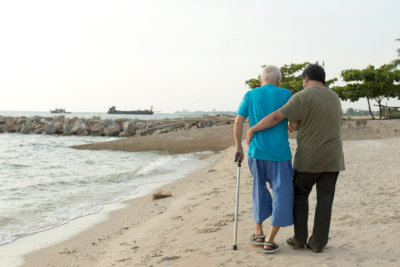
ABOUT PARKINSON’S DISEASE
Parkinson’s disease is a debilitating condition that affects over 1 million in the US and around 4 million worldwide every year. More than 60,000 are diagnosed each year and doctors say the real number is higher because many are living with Parkinson’s but have not been diagnosed.
This is because the onset of symptoms is gradual and many mistakes the early symptoms of Parkinson’s for natural aging. Parkinson’s is second only to Alzheimer’s in occurrence.
The first symptoms usually appear when a patient’s in their 60s, though early onset can affect people in their 20s. Males are 50% more likely to develop Parkinson’s than females.
The most well-known symptoms are tremors, shakiness, poor balance and posture, and diminished ability to speak. Parkinson’s patients may also experience muscle stiffness and not be able to move as fluidly or rapidly as before. This is called Bradykinesia. We will discuss other symptoms further down.
CAUSES OF PARKINSON’S
The most immediate cause is loss of nerve cells in the brain, known as the substantia nigra. These are the cells that create dopamine, one of the primary neurotransmitters the brain needs to function. Among other things, it sends signals from the brain to the body when you want to move.
When these cells are lost, dopamine levels drop and your brain’s ability to regulate your movements suffer. This is the cause of the shakes and tremors that you commonly see in Parkinson’s patients.
Parkinson’s is a disease that progresses over time and is both long term and incurable. Scientists do not know why the brain cells begin to die, but it is understood that genetic factors play a part, as well as environmental ones. External causes can include exposure to:
- Organic Solvents
- Certain Pesticides
- Carbon Monoxide
- Manganese
Most likely, there is not one single cause but a combination of genetic predispositions and environmental exposure.
COMMON SYMPTOMS OF PARKINSON’S
These can vary from individual to individual and it is a complex disease to diagnose. One thing to watch for is that symptoms usually begin on one side and worsen before affecting the other side.
The 8 most common symptoms to watch for:
- Tremors
It is normal to have shaking fingers or hands if you are under stress, just worked out, or have an injury. They can even be caused by some medications. However, tremors are one of the most notable symptoms of Parkinson’s.
- Small handwriting
This may seem odd, but a change in handwriting style may be a symptom of Parkinson’s. Its name is micrographia. Watch for handwriting that gets smaller than it once was, changes in size or shape of letters, or spacing. If you pay attention to changes in handwriting, you may be able to catch the onset of Parkinson’s.
- Diminished sense of smell
Losing your sense of smell can be a symptom of Parkinson’s. If you notice that you can’t smell things the way you used to, like lemons, licorice, mint or pickles, talk to your doctor.
- Insomnia
While the odd restless night is normal, if you notice movements more extreme than tossing and turning – flailing arms, falling out of bed, or kicking – it may be good to talk to your doctor about it, especially if the person is frequently acting out their dreams while in deep sleep.
- Difficulty moving or walking
Some stiffness after sitting for a long time is normal. However, if stiffness starts to occur in normal positions, this could be a symptom of Parkinson’s. Watch also for changes in stepping and placing the feet, or diminished arm movement while walking.
- Changes in voice
The early stages of Parkinson’s often show as an unintentionally quieter talking voice, a change of tone or sounding hoarse with a monotone. The later stages may show slurred speech or difficulty talking.
- Blank face
Loss of motor control may cause the patient to have an unexpressive face, such as a blank stare or a serious look. They may blink less.
- Change in posture
At first, Parkinson’s may show unusual posture changes. There is a gradual change, so it is important to watch out for slouching, leaning, or bending over at the waist when these are not called for in the situation. Speak with your doctor as soon as you notice any of these changes.
So far, we have talked about the physical symptoms of Parkinson’s. Changes in brain chemistry also show up in cognition, memory, attention, and mood. Here are some of the most common forms of cognitive impairment.
- Attention
Parkinson’s patients may find it hard to stay focused in a conversation or while reading a book. Walking and talking may also be difficult to do.
- Executive Functions
Solving problems, switching tasks, and starting new things may all become harder to do with Parkinson’s.
- Memory
In Parkinson’s, it usually is a short term memory or things that just happened that are hard to remember. Long term memory usually functions well with Parkinson’s. Generally, memory issues with Parkinson’s are less severe than with Alzheimer’s.
- Language
Finding the right word may be hard. The patient may tend to talk less and speak more softly.
Other symptoms may include slower thinking, difficulty reasoning, declining intelligence, and brain fog.
We continue to educate and train our caregivers. With each new client, we provide personalized training necessary tailored to our client needs.




